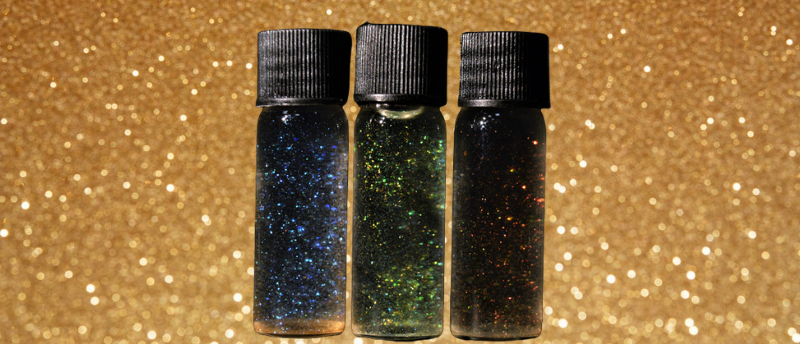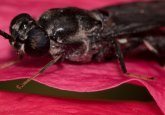A sparkly future: sustainable cellulose glitter made from wood pulp

A large-scale fabrication of cellulose glitter has been developed which is biodegradable and plastic-free, meaning the shiny stuff can be made from your fruit bowl!
It’s that time of year again when we all become magpies who love some added sparkle on everything and anything. Expect to keep finding hints of glitter lingering on your cheek for weeks after the festivities have ended; however, that’s not the only place glitter will continue to lurk.
“Consumers are starting to realize that while glitters are fun, they also have real environmental harm,” says Silvia Vignoloni, who leads a research group at The University of Cambridge (UK) looking for cellulose extraction and glitter alternatives. This is in part because glitter is not biodegradable so pieces will, “get into the soil, the ocean and contribute to an overall level of pollution.” Vignoloni’s research group have now developed a glitter made from cellulose, the main building block of cell walls in plants, which is plastic-free.
This new glitter is made from nanocrystals that bend light through a process called ‘structural coloration’. This is when a microscopically structured surface interferes with visible light resulting in vivid colors. This phenomenon occurs in nature in the likes of butterfly wings or peacock feathers, which is exactly how I hope to look when I smear a substantial amount of glitter across my eyelids this holiday season.
 When it comes to hugs: the longer the better
When it comes to hugs: the longer the better
What makes a good hug? A team of researchers have conducted an experiment to answer that very question.
The cellulose is extracted from wood pulp in large-scale films that are then ground to the right particle size for glitters or pigments. “The challenge has been how to control conditions so we can manage all the physical-chemical interaction simultaneously, from the nanoscale up to several meters, so that we can produce these materials at scale,” says Benjamin Droguet, the first author of the study.
As well as being biodegradable, this process is also less energy intensive than conventional glitter-making methods. “Traditionally, effect pigment minerals have to be heated at temperatures as high as 800°C to form pigment particles,” explains Droguet, “when you consider the quantity of mineral effect pigments that is produced worldwide, you realize that their use is harmful to the planet.”
In Europe alone, the cosmetics industry uses 5,500 tonnes of microplastics every year, so the hope is for this biodegradable material to replace this. “We believe this product could revolutionize the cosmetics industry by providing a fully sustainable, biodegradable and vegan pigment and glitter,” says Vignolini. The research group are hoping to make this cellulose glitter commercially available and create a spinout company in the future.
Whilst this cellulose-glitter is a win for the environment, Vignolini does add that “it will be just as annoying – but it won’t harm the planet and is safe for your little ones.”





